The Urban Oil Fields of Los Angeles
In the 1890s, the small town of Los Angeles (population 50,000) began a transformation driven by the discovery and drilling of some of the most productive oil fields in history. By 1930, California was producing nearly one quarter of the world's oil output, and its population had grown to 1.2 million. In the decades that followed, many wells closed, but even more opened, surrounded by urban and suburban growth. Machinery was camouflaged, loud noises were abated, methane pockets were vented, as residents learned to live side-by-side with oil production facilities. To this day, oil fields in the Los Angeles Basin remain very productive, and modern techniques have centralized operations into smaller areas or moved offshore. Gathered here are images of some of the sites and machinery still in use among the homes, golf courses, and shopping malls of Los Angeles.
HINTS: View this page full screen. Skip to the next and previous photo by typing j/k or ←/→.
 An oil well pumps next to yard containing junked hearses and ambulances near Signal Hill in Long Beach, California, on May 29, 2003. The Signal Hill Oil Field, now known as the Long Beach Oil Field, had the world's highest oil production per acre by the mid-twentieth century. Hundreds of companies and individuals became rich on minute leases, some locations so close that derrick legs overlapped. New housing and stores are now being built among operating oil wells. #David McNew/Getty Images
An oil well pumps next to yard containing junked hearses and ambulances near Signal Hill in Long Beach, California, on May 29, 2003. The Signal Hill Oil Field, now known as the Long Beach Oil Field, had the world's highest oil production per acre by the mid-twentieth century. Hundreds of companies and individuals became rich on minute leases, some locations so close that derrick legs overlapped. New housing and stores are now being built among operating oil wells. #David McNew/Getty Images An oil well pumps in a newly constructed neighborhood near Shell Oil Company Alamitos No. 1 discovery well on Signal Hill in Long Beach, California, on May 30, 2003. Alamitos No. 1 was created in 1921 and helped establish California as one of the world's major oil-producing states. #David McNew/Getty Images
An oil well pumps in a newly constructed neighborhood near Shell Oil Company Alamitos No. 1 discovery well on Signal Hill in Long Beach, California, on May 30, 2003. Alamitos No. 1 was created in 1921 and helped establish California as one of the world's major oil-producing states. #David McNew/Getty Images Inglewood Oil Field, near Culver City. Hundreds of wells dot this nearly 1,000 acre field, the largest contiguous oil-producing site in the Los Angeles area. View onGoogle Maps. #© Google, Inc.
Inglewood Oil Field, near Culver City. Hundreds of wells dot this nearly 1,000 acre field, the largest contiguous oil-producing site in the Los Angeles area. View onGoogle Maps. #© Google, Inc. A rig pumps oil from the Inglewood oil field, as visitors enjoy the nearby Kenneth Hahn State Recreation Area, in the unincorporated Windsor Hills area of Los Angeles, on Friday, February 12, 2010. The Inglewood field, one of the richest oil basins in the world where crude was discovered in 1924, sits adjacent to an area of homes once known as the "black Beverly Hills." #AP Photo/Reed Saxon
A rig pumps oil from the Inglewood oil field, as visitors enjoy the nearby Kenneth Hahn State Recreation Area, in the unincorporated Windsor Hills area of Los Angeles, on Friday, February 12, 2010. The Inglewood field, one of the richest oil basins in the world where crude was discovered in 1924, sits adjacent to an area of homes once known as the "black Beverly Hills." #AP Photo/Reed Saxon Paul Ferrazzi holds a jar of brown-tinged water from local wells in the unincorporated Windsor Hills area of Los Angeles on February 12, 2010. Rather than eventually playing out and becoming an elaborately planned urban park, a new operator in 2004 began drilling what was planned to be the first of some 600 new wells over the next 20 years, without environmental review. #AP Photo/Reed Saxon
Paul Ferrazzi holds a jar of brown-tinged water from local wells in the unincorporated Windsor Hills area of Los Angeles on February 12, 2010. Rather than eventually playing out and becoming an elaborately planned urban park, a new operator in 2004 began drilling what was planned to be the first of some 600 new wells over the next 20 years, without environmental review. #AP Photo/Reed Saxon A new tower undergoes construction among various structures and palm trees that are used to camouflage oil extraction operations on Island White, one of four such oil drilling islands operated by THUMS Long Beach Company, which is owned by Occidental Petroleum Corporation, in Long Beach, California, on July 30, 2013. #Reuters/David McNew
A new tower undergoes construction among various structures and palm trees that are used to camouflage oil extraction operations on Island White, one of four such oil drilling islands operated by THUMS Long Beach Company, which is owned by Occidental Petroleum Corporation, in Long Beach, California, on July 30, 2013. #Reuters/David McNew An aerial view of Grissom Island, one of four oil drilling islands in San Pedro Bay, off the coast of Long Beach. The four islands contain nearly 1,500 wells, accessible by movable derricks. View on Google Maps. #© Google, Inc.
An aerial view of Grissom Island, one of four oil drilling islands in San Pedro Bay, off the coast of Long Beach. The four islands contain nearly 1,500 wells, accessible by movable derricks. View on Google Maps. #© Google, Inc. The Packard Well Site is a drilling location disguised to look like a nondescript office building from street level. Inside a derrick is free to move about on tracks, accessing any of the 50 wells in operation. #© Google, Inc.
The Packard Well Site is a drilling location disguised to look like a nondescript office building from street level. Inside a derrick is free to move about on tracks, accessing any of the 50 wells in operation. #© Google, Inc. Oil rig pumpjacks extract crude from the Wilmington Field oil deposits area where Tidelands Oil Production Company, which is owned by Occidental Petroleum Corporation (Oxy), operates near Long Beach, California, on July 30, 2013. #Reuters/David McNew
Oil rig pumpjacks extract crude from the Wilmington Field oil deposits area where Tidelands Oil Production Company, which is owned by Occidental Petroleum Corporation (Oxy), operates near Long Beach, California, on July 30, 2013. #Reuters/David McNew
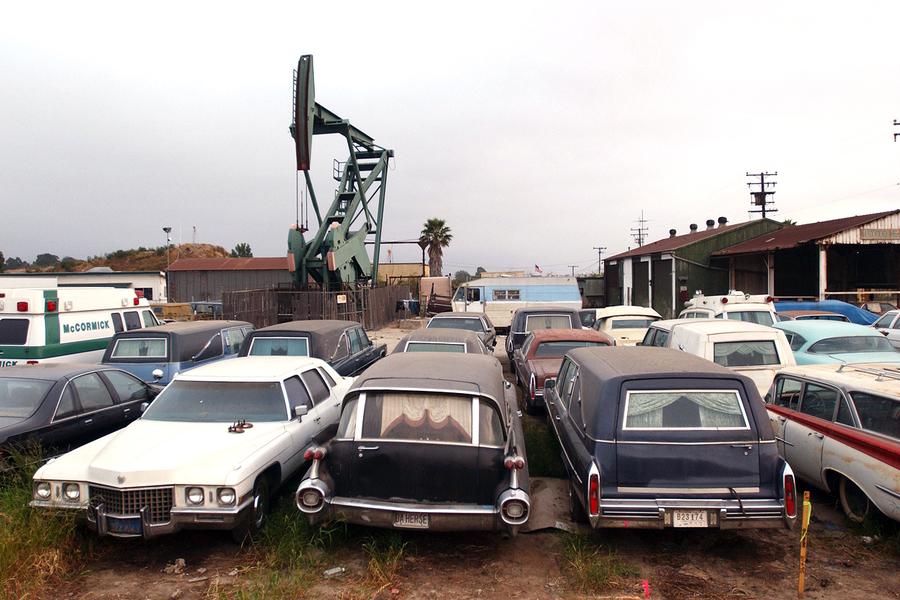

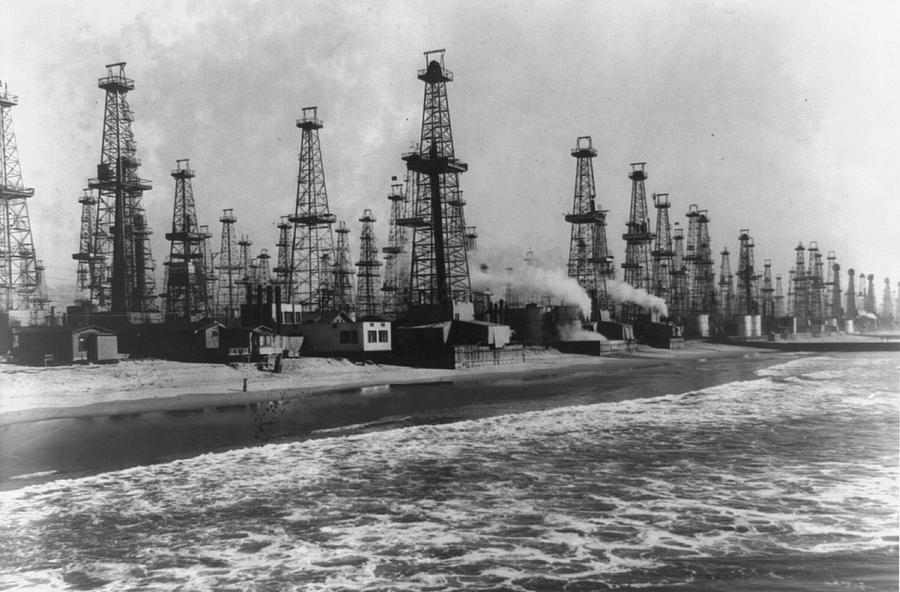
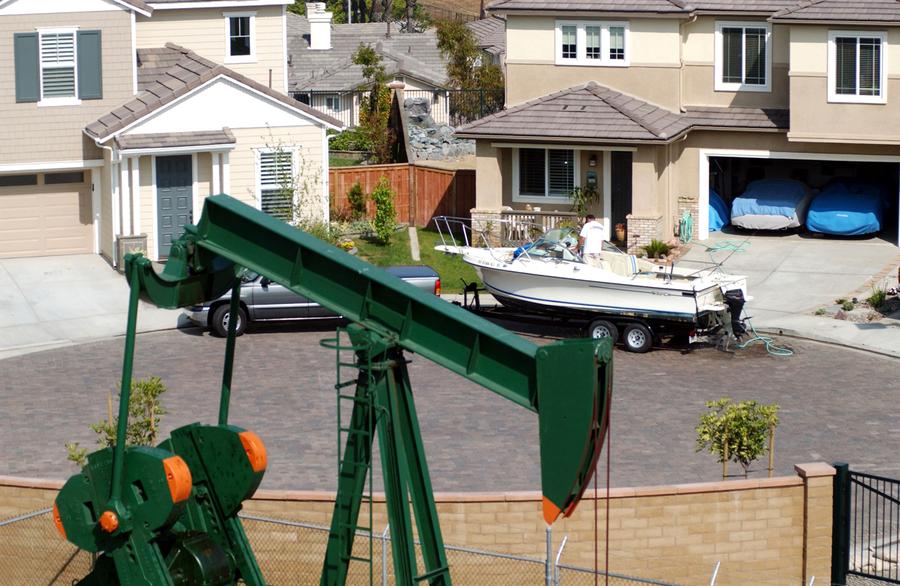

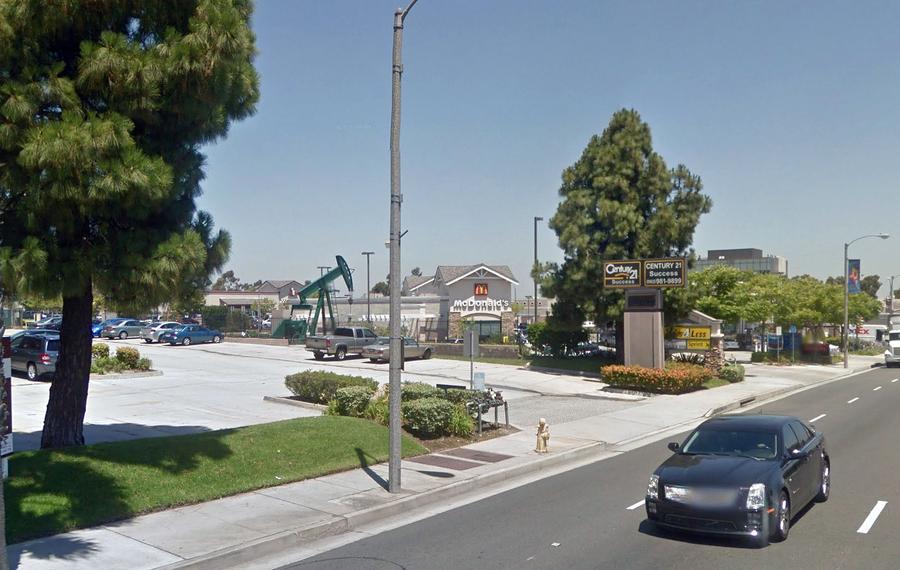


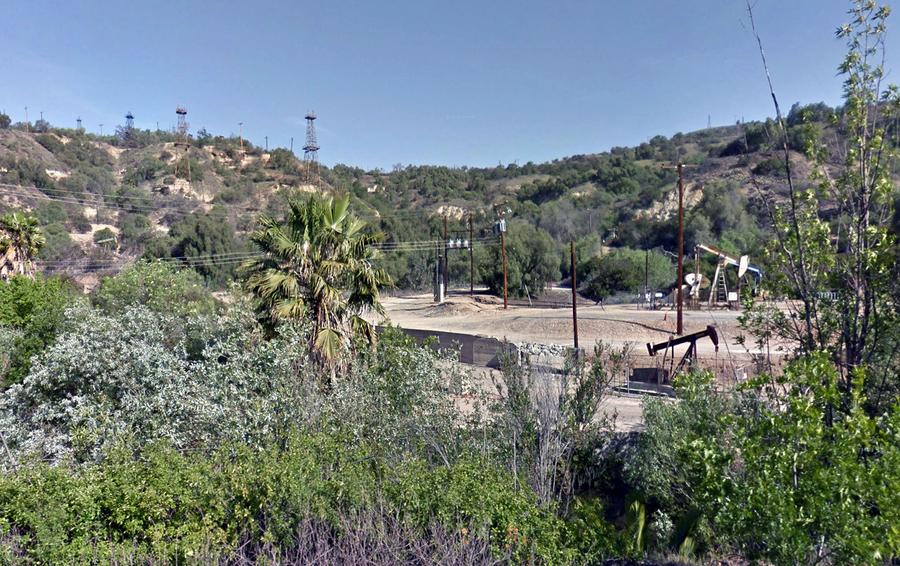

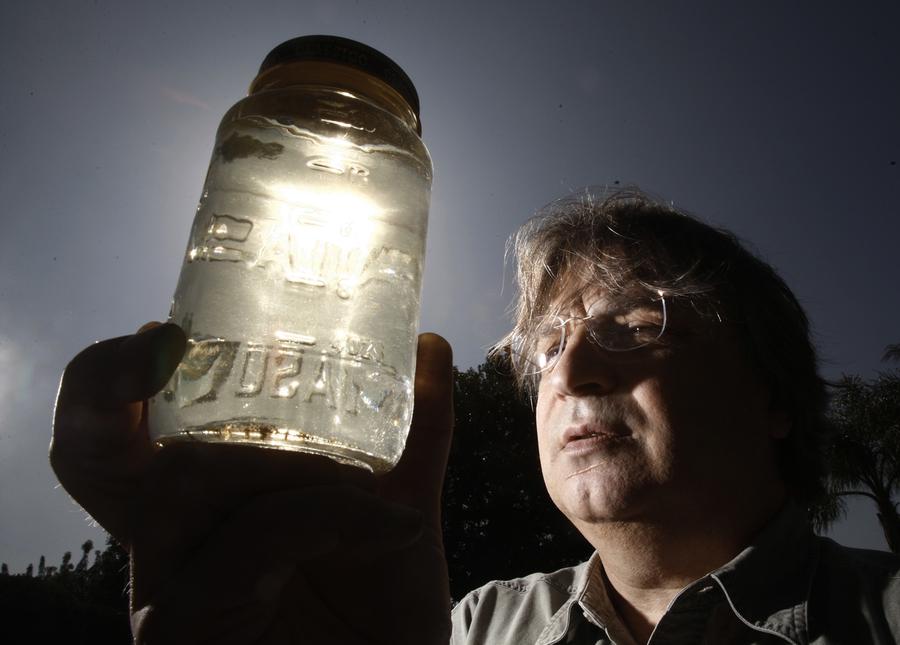
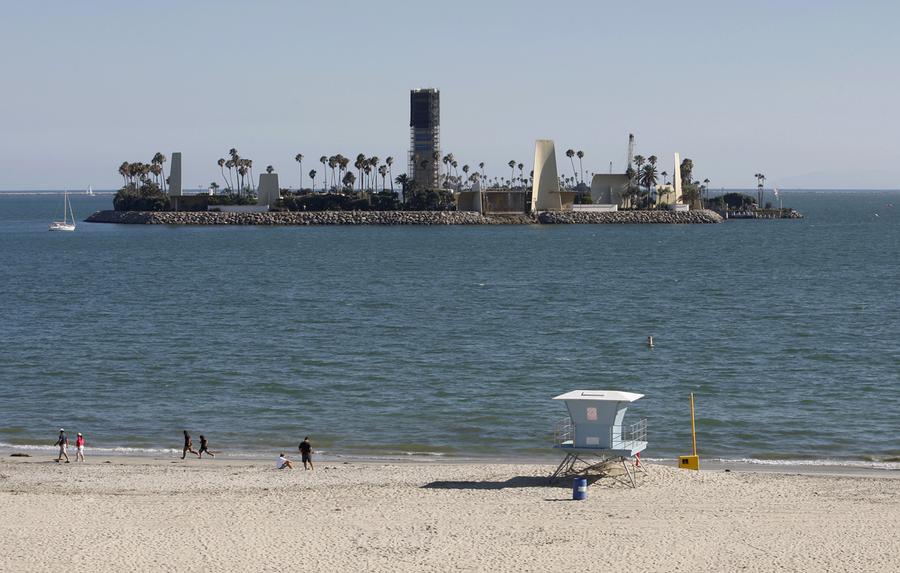
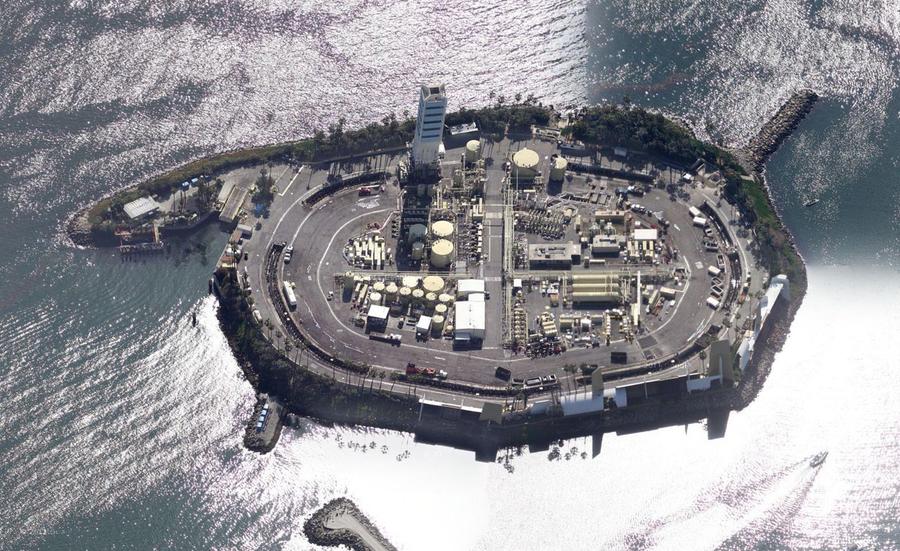

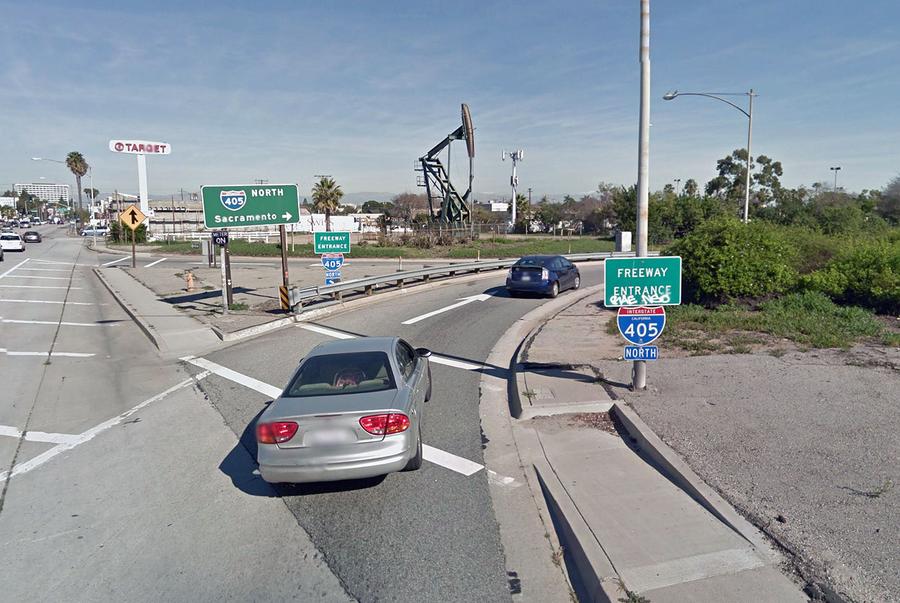
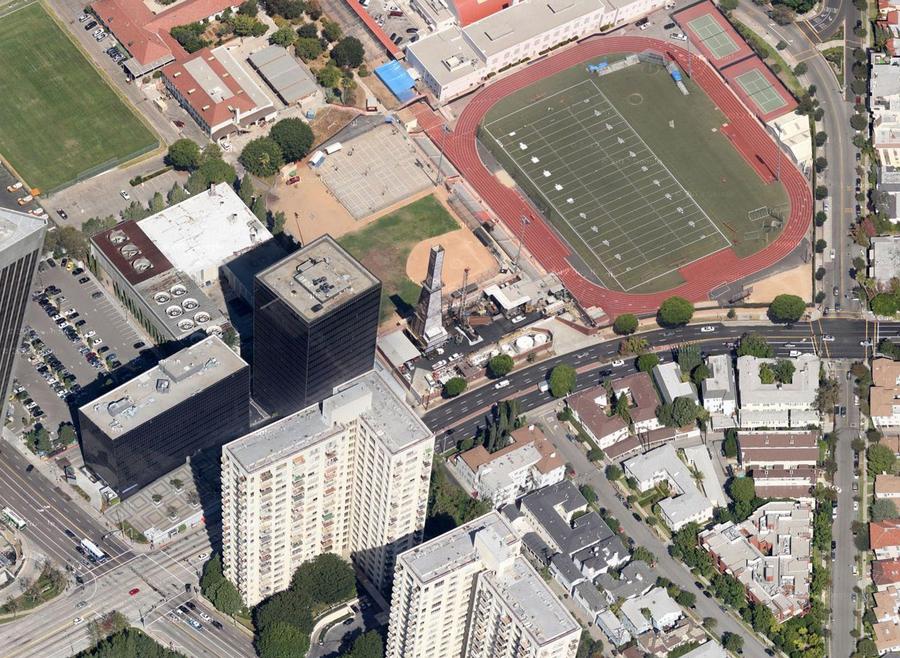

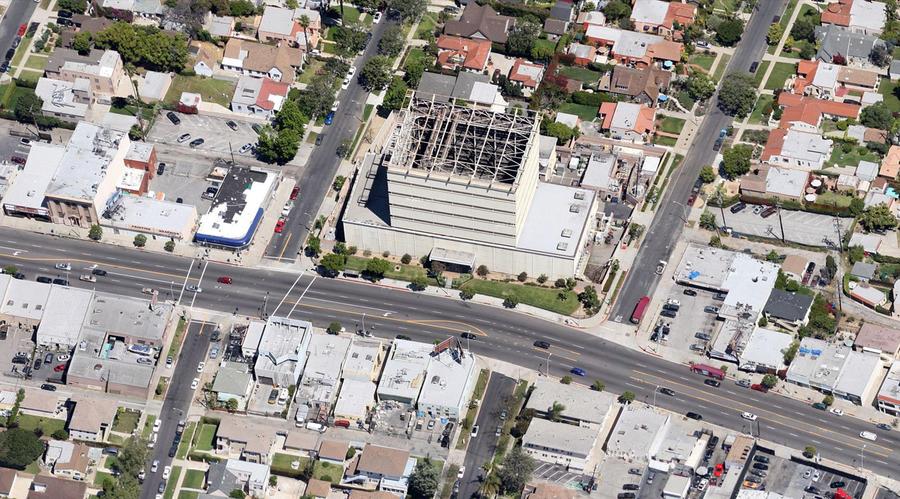

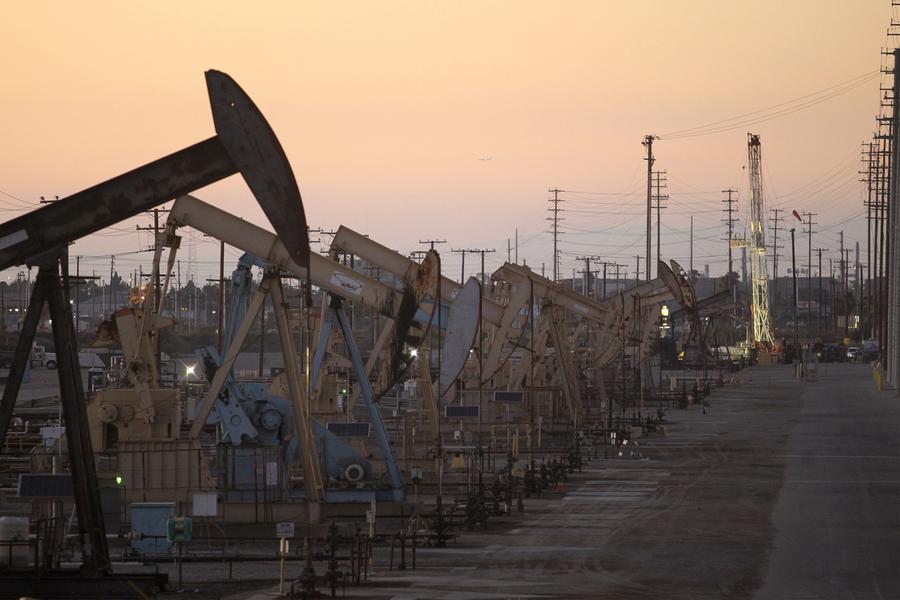

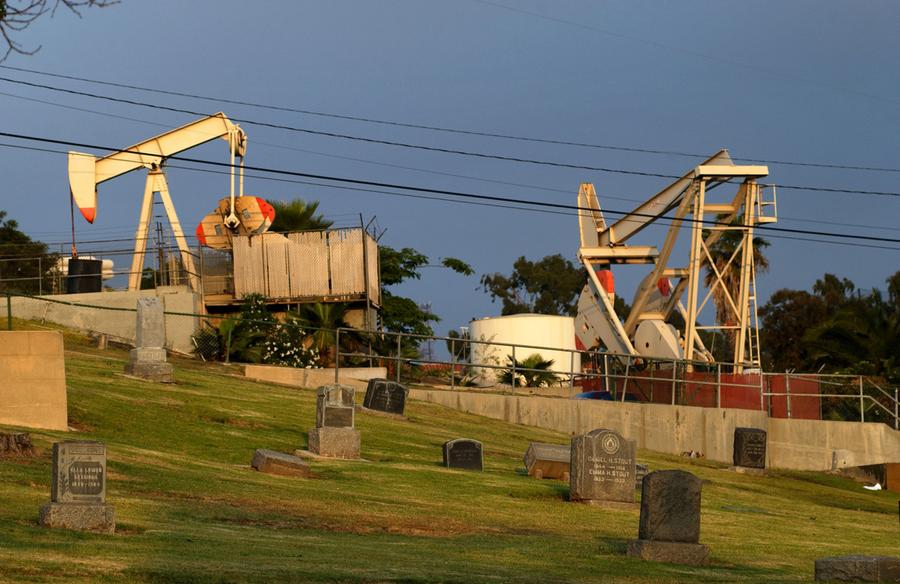

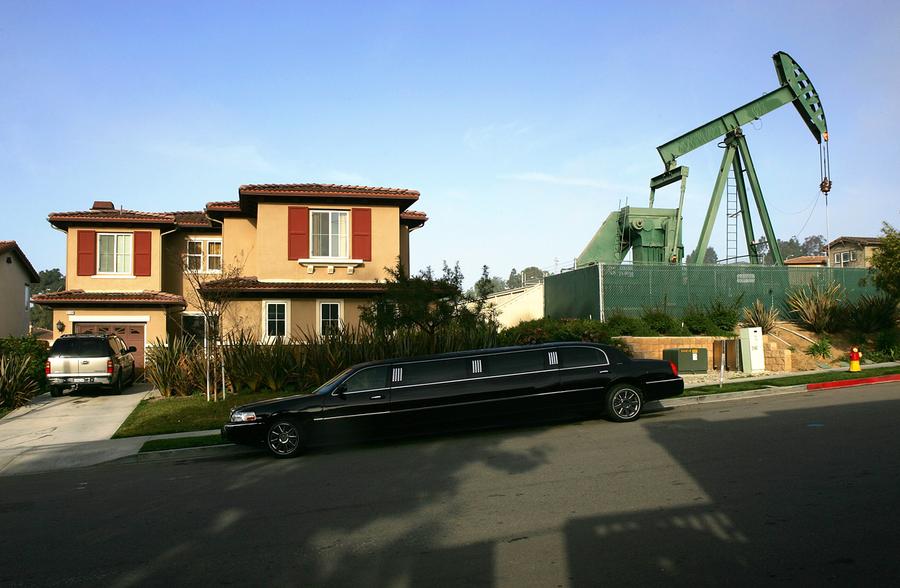
No comments:
Post a Comment